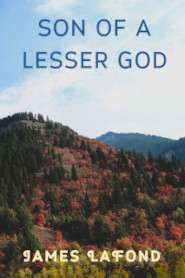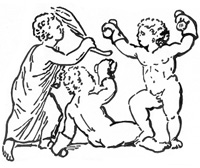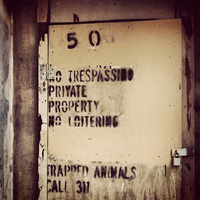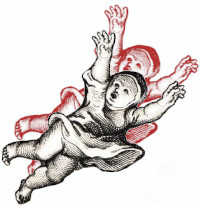Malcolm
I work with a young writer named Malcolm who is collaborating with his brother on a fictional setting set in the American Southwest between the coming of the conquistadors and the coming of the Americans. He mentioned that he was going to have to do a lot of research to get the setting authentic but also wanted to ‘tweak it for a fantasy element without getting too unrealistic.’
I researched this same setting and time period for my Sunset Saga and decided on working up a post conquistador setting in the Eastern Woodlands instead so that I could write on ground I had walked to lend more authenticity. So I’m publishing some of my research here along with my thoughts on diverging their setting from the historical timeline as realistically as possible.
I hope this helps guys. Just remember that a small change can be milked for a lot of effect further down the timeline.
The Eldorado Concept
Your setting is ideal for fantasy fiction as the areas of Spanish occupation in the colonial Americas combined two contrasting lifeways in such a way as to provide a politically stagnant and adventure rich setting. In the beginning the Spanish came with medieval armies and wiped out tens of millions of advanced stone age agriculturalists. They dreamed of Eldorado, a mythic realm of golden cities—7 it was said—that was essentially the materialistic evolution of the mystical ideal of the ‘Fountain of Youth’ that Ponce de Leone took an arrow in the ass for in Florida. This fantasy was fueled by the plundering of the Aztec and Inca empires, with the younger members of these expeditions raising their own armies to find the fabled 7 cities in North America, at precisely the same time, in about 1540.
For a fantasy setting a static geopolitical environment is much more manageable for the author and provides loads of small scale war and quest opportunities for characters which will have a minimal effect on the setting structure. This was the case in the Southwest, where, from 1544 to the 1830s the native people lived in outlying wilderness areas and the descendents of the conquistadors lived in essentially feudal conditions. I went east with my setting idea as it’s a sci-fi story and social and technological change is desirable in the sci-fi genre, whereas much of the appeal of fantasy is the appeal of tradition and cultural sentimentality.
The Apaches [mountain infantry] and Comanche [plains horseman] kicked the shit out of the Mexicans for centuries. Up until the 1830s battles with very few firearms were still being waged in places like New Mexico in much the same manner that feudal European border lords had struggled against pagan barbarians along the European fringe in the early and middle medieval period.
To make the setting epic with opportunity for quest adventures that appeal to young readers, all you need to do is come up with a back story that places an Aztec outpost somewhere on the Mississippi or Missouri watershed—like a North American Machu Picchu—and direct Soto’s 1540-44 expedition up the Mississippi watershed instead of having him trash the entire aboriginal Southeast.
In that case you gain three stabilizing factors that would insure a pretty much medieval American Southwest, with various Hispanic enclaves further north and east than they were historically. You see, what will ruin the fantasy aspects is the advent of the English. Before I explain the colonial undercurrents that would surround your setting let me briefly touch on the conquistadors.
The Dandy and the Devil
The American Southwest was invaded by Coronado, the wimpiest of the conquistadors by far. While he was getting his ass kicked and exploring in terror, further east, Hernando de Soto, most savage conquistador to live, was wiping out the advanced and warlike Mississippian civilization with a small army that could have taken to the European battlefield as a battle division at the time, and would be equivalent to a modern Marine Brigade; it was a late medieval army reconfigured for hunting primitive warriors, complete with three types of large man eating war dogs.
The Spanish knew about the Mississippi but went east to the Appalachian littoral because they new mountains and dense populations usually meant gold. If something like Cahokia under Native Central American influence had survived the dry period that came with the Little Ice Age 200 years earlier, then Rocky Mountain gold deposits may well have been worked and have turned the center into something close to what Soto was dreaming of.
So, all you need to have is a more robust and extensive Spanish Southwest, borders harried by Apaches, Comanche, Lakota and Crow who would appear much as the first trans-Mississippi American settlers first saw them. The setting would diverge from the historical timeline when Soto gets wind of this city, heads up the Mississippi, leaves the Mississippian civilization intact, and eventually bitch slaps or decapitates Coronado and takes over his expedition as well.
The result would be Soto’s successors breaking into rival camps and setting up an insane quasi-Iberian ‘feudal civilization’ beholding to a very distant king. The key here is keeping the Mississippian’s intact, as Soto wiping them out removed a major obstacle to westward expansion by Anglo settlers. Historically the Americans came southwest a generation before they came northwest for this reason. Going this route permits a feudal Spanish/aboriginal American setting to survive until the 1860s instead of getting ploughed under in the 1830s. Setting your story between 1800 and 1840 permits you to mix a lot of cool European weaponry with still viable medieval societies and intact Native tribes.
European Amerindian Dynamics
This is a guide for how the various European colonial cultures interacted with each other and the indigenous peoples.
Spanish
The Spanish came with a medieval mindset to conquer, and only exterminated as much of the population as they had to take charge. There idea of managing their conquest was to replace the indigenous rulers, and then live as feudal lords off of the backs of their native serfs. Intermarriage was more common than not, with a racial hierarchy going from red at the bottom, brown in the middle, and white at the top. This worked good with settled Amerindian populations but never successfully dealt with hunting and gathering tribes, who remained to menace the fringes of Spanish America until the early 20th Century.
What the Spanish were real good at was excluding other European powers. French colonies were wiped out in Florida and the English were terrified of getting caught on shore at Jamestown by even one Spanish ship. This is because the Spanish idea of colonialism was military. Their settlements would not be found farther north than the Missouri, and the New Orleans site would be Spanish—a major hub—and named something else.
French
The French had the least impact on native populations as they just set up small trading posts. They mapped the interior well, avoided the Spanish, and tried and failed to deal with the English. They were a good source of weapons and tools for the Natives, and would provide good guide type characters for a fantasy setting. Their influence would extend no farther south than the Missouri Watershed in the setting I’m suggesting.
English
The Anglo settlers of North America came to work the land, settling in areas where the natives had died off from diseases introduced by kidnappers, slave raiders, whalers and fishermen. They would make nice with the local natives a little farther inland for the first generation. Then they would birth a load of English brats, build a population base, make alliances with the mountain tribes to help them wipe out the hill tribes, and then stab their neighbors in the back in a genocidal way. They repeated this process all across the continent, until, by the time they hit the Mississippi, they were a nation of farmers with a good population and industrial base spearheaded by sixth generation psychopaths like the ‘filibusters’ who infiltrated and took Texas and California.
While earlier Anglo settlements were fragile non-military communes and mercantile slave camps they built their own indigenous population and became an unstoppable force. I would say, that in the setting I have sketched, Anglo Armageddon comes in the 1860s with a still slave-owning America invading across the Mississippi north and south, with that version of America not having its Civil War until the 1890s and abolishing slavery at about the time that Brazil did, circa 1900.
Appendix from Big Water Blood Song
This is my best reconstruction of Soto’s invasion force, which, in this divergent setting would have suffered few casualties and could serve as the basis for your Spanish population. Soto’s men really wanted to settle the land but he drove them on increasingly frantic searches for gold. Think of him as Scar Face with an armored horse and hell hound. This entire expedition is a cabal of crime bosses with a military background.
Soto was insane and would eventually have gotten himself killed in the Rocky Mountains looking for gold. You could have his various captains fall out after his death and carve up their own little governorships that might form the basis of the residual settlements. [They were not rebellious and would have never made themselves king.]
The important development is the introduction of the horse to the natives who will use it to much better effect than the Spaniards. By your period Spanish armament will have lightened quite a bit, but with firearms never becoming as effective or dominant as with the Anglos. The dogs were horrifically cruel and were a Soto trademark. The Aztecs feared them more than swords, guns or horses. In your fantasy setting you definitely want to keep this aspect as a Spanish terror weapon. Being ‘thrown to the dogs’ will be the price of defying lord.
The Soto Entrada to La Florida, A.D. 1539 [according to Frere Sebastian de Canete]
Armada
San Cristobal [800 tons]
Governor Soto’s flagship
Crew: Master Luis Perez; Boatswain Juan Suarez; Purser Juan de la Fuentes; 20 seamen
Transporting: Captain Espindolo [halberdiers]; Captain Calderon [cavalry]; wolfhounds; governor’s staff;
Royal officers; Clerics
La Magdelena [800 tons]
Flagship of Captain General Vasco Porcallo
Crew: Master Pedro de Solis; Boatswain Juan Sanchez; Purser Marco Aleman; 20 seamen
Transporting: Captain Maldonado [infantry]; Captain Roma [cavalry]; mastiffs
San Juan [500 tons]
Flagship of Camp Master Luis de Moscoso
Crew: Master Juan de Cheaga; 15 seamen
Transporting: Captain Vasconcelos [cavalry]; smiths & hardware
Santa Barbara [500 tons]
Flagship of Chief Constable Baltasar de Gallegos
Crew: Master Juan Rodriguez; Boatswain Rodrigo Alonso; 15 seamen
Transporting: Captain Lobillo [infantry]
La Conception [500 tons]
Flagship of General Diego Arias Tinoco
Crew: Master Cristobal Garcia, 15 seamen
Transporting: General Arias’ Cavalry; greyhounds
San Anton [300 tons]
Flagship of Contador Juan de Anasco
Crew: Master Miguel de Aragoces, 10 seamen
Transporting: Captain Osorio [hand-gunners]
Buena Fortuna [500 tons]
Supply ship
Crew: Master Antonio de Calais, 15 seamen
Transporting: livestock, food-stuffs, laborers
Tenders [small shallow-draft vessels used for exploration, communication and special operations]
La Veronico, a lateen-rigged caravel operated by Master Pedro Guillen and 10 seamen
La Tenerife, a single-masted brigantine operated by Master Hiero Guzman and 5 seamen
La Minorca, a single-masted brigantine operated by Master Genovese Torres and 5 seamen
Ships: 10
Officers: 15
Crew: 130
Officials and Support Personnel
Governor General Hernando de Soto
-Alonso Diaz, bodyguard, wrestling champion, veteran of Peruvian Campaign
-Fray Fransisco de Torres, Soto’s personal confessor
-Rodrigo Ranjel, secretary
-Silvestre de Barcelona, stable master
-Conneg, Soto’s Irish kennel master
-Bruto, Soto’s Irish Wolfhound
-Pedro Diaz, lawyer
-Master Martin de Milan, armorer
-Juan Santiago, tailor
-Gonzalo Martin, servant [also a tailor]
-Helio Ruiz, surgeon
-Toro, barber
-Anton, page
-Tobias, page
-Henrique “The Scourge” de Lisbon, Master of Porters
-Luis de Barcarrota, cobbler, food taster
-Estelle, cook, female Cuban native [Christian]
-Ibn, factor [Moorish Muslim]
-Juan, African porter [Christian]
- Untula, African porter [pagan]
-Sengala, African porter [pagan]
-6 Aragonese stable hands attending Soto’s own herd of 12 horses
-2 Irish kennel hands
-3 Italian kennel hands
-4 Castilian kennel hands
-3 Italian apprentices to Master Martin
-4 bullies from Lisbon Portugal to assist “The Scourge”
-5 Castilian swineherds [tending approximately 60 pigs]
-2 female Cuban kitchen hands [Christian]
-25 native porters [Taino and Cuban, nominally Christian]
Captain General Vasco Porcallo
Camp Master Luis de Moscoso
Chief Constable Baltasar de Gellegos
-5 staff
-15 servants, pages & porters
General Diego Arias Tinoco [senior captain of horse]
Royal Contador & Chief Navigator, Juan de Anasco
Royal Treasurer, Juan Gaitan
Royal Factor, Luis Hernandez de Biedma
Priests: Rodrigo de Gallegos, Dego de Banuelos, Francisco del Pozo, Dionisio de Paris, Jesus Huerta,
Carlos de Medina, Hernando de Parma
Friars: Luis de Soto, Juan de Gallegos, Francisco de la Rocha, Sebastian de Canete
Camp followers: 20 laundresses and prostitutes of various origins
Officials: 8 Support personnel: 125
The Army: Captains, Units and Select Personnel
*Cristobal de Espindola
Soto’s Personal Guard
60 men armed with halberds and armored with chain mail, also armed with short swords
Peruvian veterans: Alonso Diaz, champion wrestler; Pedro, old trumpeter
10 armored Irish wolfhounds and 2 handlers armed with long knives
*Juan Ruiz Lobillo [Peruvian veteran]
Infantry: 50 sword & shield; 25 crossbow; 25 pike, all armored in chain mail with daggers
*Francisco Maldonado
Infantry: 50 sword & shield; 25 crossbow; 25 pike, all armored in chainmail with daggers
15 armored mastiffs and 3 handlers armed with clubs
*Garcia Osorio
Hand-gunners: 40 men armed with smooth-bore match-locks and swords
*Diego Arias Tinoco [General of Horse]
Cavalry: 60 men in plate armor with lances and swords
Alvaro Nieto, veteran NCO, strongest horseman in army; Gomez Ariaz, disgruntled trooper; Luis Paza, gentleman adventurer
20 greyhounds and 4 Castilian handlers armed with boarding pikes
3 pages tending 6 spare horses
*Alonso Roma
Cavalry: 40 men in plate armor with lances and swords
Don Carlos Enrique, Soto’s nephew, respected peace-maker among the men; Antonio Osorio, plunderer
2 pages tending 4 spare horses
*Pedro Calderon
Cavalry: 40 men armored in plate with lances and swords
Diego de Soto, famous jousting champion; Alvarado de la Cadena, undisciplined trooper, often derelict
2 pages tending 4 spare horses
*Andre de Vasconcelos [gentleman adventurer from Elvas Portugal]
Cavalry: 40 men armored in plate with lances and swords
Henzo, gentleman adventurer from Elvas
2 pages tending 4 spare horses
Officers: 8
Soldiers: 480 [including NCOs]
Mounts: 198
Hounds: 45
Support personnel: 18 [some are also counted under Soto’s retinue]
Army totals: Men, 506; Beasts: 243
Expedition total [excluding beasts]: 768
Further Reading/Viewing
Tactics/lifeway
-The Deadliest Warrior, Apache versus gladiator and Comanche versus I forget who but they were in trouble
European-Native American interaction [/BIOLD]
-A Voyage Long and Strange; Rediscovering the New World by Tony Horowitz
-Blood and Thunder by Hampton Sides
Environment and Society
-Collapse [the Chaco Canyon chapter] by Jared Diamond
-Cahokia: Ancient America’s Great City on the Mississippi by Timothy P. Pauketat











